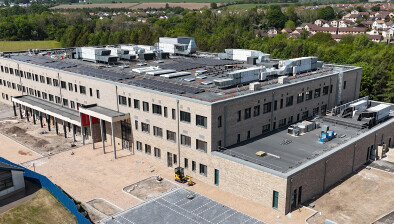Robertson Group puts floatation plans on hold after record profit

Robertson Group has withdrawn from plans to float on the stock market following a “record year” for construction and the sale of investments.
The Elgin-based firm, which also operates out of Oldham and Gateshead in the North of England, reported a record profit of £34.6 million in the year to the end of March.
The firm said it plans to build up long-term profitability before re-visiting the plans at a later date.
In a snapshot of the latest company results, chair Bill Robertson said there had been a change in business strategy.
He said: “It had been our intention to float the business in the near future. However, the timing of that will be determined by the achievement of long term sustainable higher profitability.”
According to the figures, Robertson Group’s turnover rose 13 per cent to £261.3m in the 12 months to March 2014.
The company said it had also increased staff by 20 per cent since 2008.
Regarding the company’s strategy, Robertson said: “We are on year four of our five year strategic plan which would see us grow through the creation and development of regional businesses replicating our current group model but also broadening our product range.
“We also recognise the requirement to support small and medium sized enterprises in our supply chain, which has been severely damaged throughout the recession.
“To address our value and profit aspirations for the future, we can no longer be reliant on tender based opportunities, instead using a knowledge based approach to identify opportunities earlier, we expect to be able to improve the quality of opportunity and profitable outcomes through helping clients achieve better value.”
The group reports a “record” forward order book, with £289m in work secured for the 2014/15 year and a long-term order book value of £1.4 billion.
In construction, Robertson said profits rose 11 per cent, though no figures are provided, and the current order book in the division in £402m, up 52 per cent on the previous year, the group said.
In timber framing, the group said the division is expected to return to profitability and hopes a mothballed factory in England will be re-opened “during 2015”.
In facilities management, Robertson said the division delivered “both turnover and growth over the last financial year”, though no figures are provided.
Comparable divisional trading figures are not available as the group notes in 2013 accounts: “No segmental analysis of turnover is provided as in the opinion of directors this information is commercially sensitive”.
Looking ahead, Robertson Group said: “To address our value and profit aspirations for the future, we can no longer be reliant on tender based opportunities, instead using a knowledge based approach to identify opportunities earlier, we expect to be able to improve the quality of opportunity and profitable outcomes through helping clients achieve better value.
“It had been our intention to float the business in the near future.
“However, the timing of that will be determined by the achievement of long term sustainable higher profitability.”
Bill Robertson said: “Going forward, our profit before tax budget for the current year is £10m from trading activities and we are on track to achieve it.
“That will then see the business back on track and producing profits closer to pre-recession levels.
“This will have been a really challenging exercise but one worth doing. We are, however, of the firm opinion that once the UK funding market settles, funders will be attracted to our sector albeit they would expect to see players in our market produce profit levels which balance with our risk profile.
“Our objective now, is to select higher value projects to improve the profitability of the business.”
He added: “Banking has not returned to what it was pre the recession and I believe that going forward, funding in our sector will be sourced from a range of different funders.
“However, whoever the funder, they will require profitability levels in our sector to be higher, reflecting our value and risk profile.”














